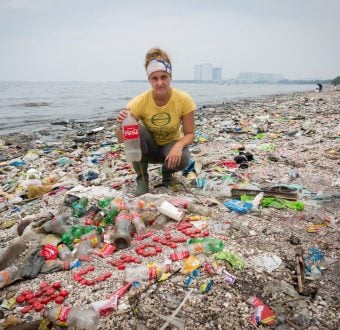Here’s a note from Renee, who works in San Francisco as a toxics campaigner trying to encourage electronics companies to go green:
Greenpeace activists have shown up at Dell headquarters in Amsterdam, Copenhagen, Bangalore, and Austin. Plus, more than 40,000 activists around the world have sent emails asking Dell to design out toxics. Dell’s hearing your message.
In 2006, Dell committed to eliminating PVC plastic and brominated flame retardants (BFRs) from all their products by 2009. But halfway through 2010, Dell has yet to meet this original deadline and it doesn’t look like this giant electronics company will even meet its new deadline of 2011. It’s clear that Michael Dell is all talk and no action.
Here are answers to some common questions we’ve heard about why we are pressing Dell and why our Greener Electronics campaign is important.
Question: Why does Greenpeace care what Dell does – they’re not the biggest PC manufacturer, and they’re not the worst of them all (Nintendo is)?
Answer: Dell is the 3rd largest computer manufacturer in the world with 12% of the entire market. That adds up to a significant amount of influence over the electronics industry. With HP and Apple already making most (HP) if not all (Apple) of their products free from PVC and BFRs, adding Dell to this list of industry leaders would help pressure the rest of supply chain, and the industry, to eliminate these toxic chemicals once and for all.
What does Dell say?
Question: Why haven’t they followed through?
Answer: Thousands of our supporters have emailed Dell about its broken promises on PVC and BFRs. Dell has sent emails back saying they are facing some challenges. However, these challenges have been met with solutions by Dell’s largest competitors including Apple and HP. Apple has completely eliminated PVC and BFRs from all their products and HP has eliminated these chemicals from a significant portion of their products. The solutions and alternatives exist and their supply chain is ready. Dell has run out of excuses.
Are they taking responsibility?
Question: How does Dell make sure that their computers aren’t shipped to developing countries? And how much responsibility do they take for the health and environmental damages their products cause?
Answer: Dell was one of the first companies to implement a voluntary take back policy in 2006, which Greenpeace applauded. But today this policy still doesn’t extend to all countries where Dell products are sold. With the growing e-waste problem reaching, by U.N. estimates, 20-50 million tons annually, not taking a global and comprehensive approach to preventing Dell products from ending up in scrap yards is irresponsible.
It is important to remember that having a take back program alone isn’t enough. Without the elimination of PVC and BFRs from all electronics products, Dell is polluting our health and the environment through the use of these chemicals.
Thank You!
I want to thank everyone for spreading the message about Michael Dell and his broken promises. Tweeting, Facebooking, emailing, and calling – Dell is hearing your voice!
If you haven’t already, take action!
And if you have more questions, please post them in the comments.


